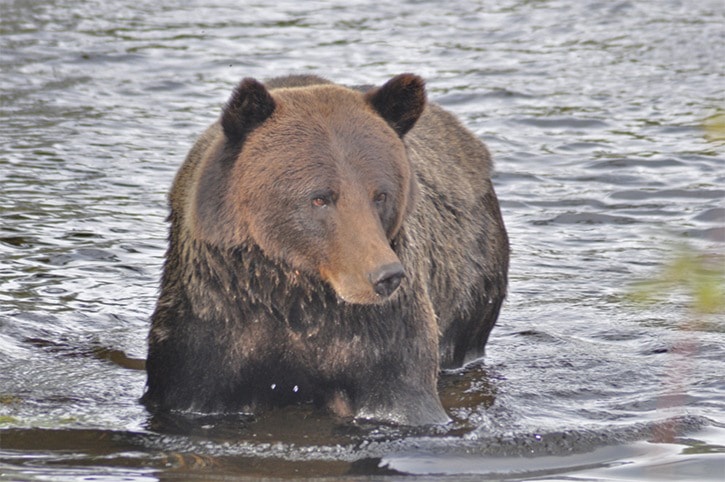Grizzly bears have been hunted in the province since before European settlement. However,
British Columbians have different views on the ethics and ecology of grizzly bear hunting.
Grizzly bears in B.C. are managed by grizzly bear population units (GBPUs) in order to ensure local conservation and management objectives are being met.
Burns Lake is located in what is called the Francois GBPU, 11 km east of the Bulkley-Lakes GBPU border.
With an estimated grizzly population of 58 bears, the Francois GBPU was closed for grizzly hunt in 2012 as a result of its low population estimate. Hunting is permitted, however, in some portions of the Bulkley-Lakes GBPU.
There were 76 authorizations issued in 2014 for the Bulkley-Lakes GBPU. From those authorizations, nine grizzly bears were harvested in 2014 – five by residents and four by non-residents (guided).
Currently, the estimated grizzly population within the hunted portions of the Bulkley-Lakes GBPU is 336.
According to Brennan Clarke, Public Affairs Officer for the Ministry of Forests, Lands and Natural Resource Operations, the government allows a grizzly bear harvest based on the “best available science.”
“The principles behind our decisions are: a scientifically informed population estimate; estimates of sustainable human-caused mortality rates; and deliberately conservative mortality limits,” he said.
But some scientists argue that the province’s approach to grizzly bear management is “risky.”
Six biologists from Simon Fraser University and the University of Victoria analyzed trophy hunt for grizzly bears across the province from 2001 to 2011. The scientists published their findings in the scientific journal Plos One in 2013 - http://journals.plos.org/plosone/article?id=10.1371/journal.pone.0078041
Kyle Artelle, the leading researcher of the study, says many populations of B.C. grizzly bears are at risk.
“We began [the study] with a simple test, comparing how many bears the government’s biologists said could be killed versus how many were actually killed in each population open to the hunt,” she said. “We found that the government’s limits were exceeded in half the populations open to the hunt.”
But when the scientists dug deeper, they found flaws in the way grizzly hunt is managed in the province.
“There are lots of unknowns in management - how big population sizes actually are; how many bears are killed illegally; and how quickly each population grows - that are currently overlooked,” she said. “Not addressing these uncertainties makes the management even riskier.”
According to Artelle, there are many issues that could affect grizzly populations in the future such as habitat loss and degradation, climate change and salmon declines. Therefore, a more careful approach to the grizzly hunt in B.C. would be wise.
According to her study, the vast majority of the grizzly overkills detected from 2001-2011 - at least 85 per cent - could have been avoided had the hunt been reduced by half or eliminated.
“Of every five bears that die in this province, four die at the hands of humans, most in the trophy hunt,” she said. “One easy step is to simply reduce the hunt.”
According to the ministry of forests, the average reported mortality of grizzly bears in the province has been almost 300 per year, which represents 53 per cent of the maximum limit.
The grizzly bear harvest is managed on a five-year allowable harvest limit. Since the annual harvest fluctuates, the provincial government makes adjustments every year to harvest limits.
“Adjustments are made annually as necessary to ensure the harvest limit does not exceed a certain level over a five-year period,” said the ministry. “While it is not uncommon for mortality in an individual year to exceed the annual allowable mortality for a GBPU, this does not represent a conservation concern or overharvest as adjustments are made in the following years.”
In 2014, there were 3067 limited entry hunt authorizations issued for grizzly bears in the province. From those authorizations, 165 grizzly bears were actually harvested. In addition, 102 were harvested by guide outfitters for a total harvest of 267.
“Many more tags are issued than bears are harvested, and this predictable success rate is built into the system,” explained Brennan.
The provincial government estimates that there are approximately 15,000 grizzly bears in B.C.
In the 1970’s the estimate was 6600 grizzly bears. That changed to 13,000 in 1990; 17,000 in 2004; and 16,000 in 2008. However, the ministry of forests says the variation in estimates from year to year does not reflect a trend in grizzly bear numbers because the methods used to estimate the population have evolved and improved over time.
